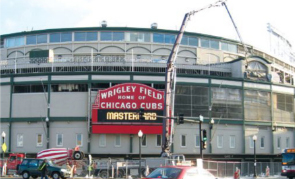Build With Strength: Report Examines Costs and Benefits of Building with Resiliency

Recent research from MIT’s Concrete Sustainability Hub found that a $10 million non-engineered wood building is expected to face $0.505 million in hazard related damages over 50 years, while a $10 million engineered concrete building is expected to face only $0.165 million over the same period. According to the Fifth Assessment Report of the Intergovernmental Panel on Climate Change, the global cost of climate-related disasters has dramatically increased each decade: from $50 billion in the 1960s (16 disasters) to $400 billion in the 1990s (70 disasters).
When coupling incentives for resilient construction with tax credits and/or insurance rebates (as in Georgia, Mississippi, Alabama and North Carolina), one wonders why there would be such an objection to it. It truly creates a win-win scenario for states and the building industry. Data from the National Institute of Building Science’s Multi-Hazard Mitigation Council also shows that for every $1 spent on disaster mitigation, society saves $4. Build with Strength is a coalition led by NRMCA to address this issue in many states and cities, with both a public affairs campaign and a robust advocacy effort.
To learn more about how NRMCA can assist in mitigating disasters and hazards in your state, please contact John Loyer at (703) 675-7603 or jloyer[at]nrmca[dot]org.
WRIGLEY FIELD STANDS TEST OF TIME
Build with Strength continued the efforts to inform Chicago’s design, build and code communities by releasing a new infographic highlighting a true icon of American strength and durability—the Chicago Cubs’ Wrigley Field.
Opened in 1914 along Addison Street on Chicago’s north side, Wrigley Field, aka “The Friendly Confines,” a phrase made popular by legendary Hall of Famer Ernie “Mr. Cub” Banks, is one of the oldest Major League Baseball stadiums, second to only Boston’s Fenway Park. The stadium, consisting of 45,200 cubic feet of concrete weighing a whopping 6.5 million pounds, was built to last for generations. It has.
The concrete contained within has withstood a century of Chicago’s wind and frozen winters, yet the one constant every year has been Cubs baseball come spring.
“Visiting Wrigley Field is at the top—or very close to the top—of many baseball fans’ bucket list,” said Kevin Lawlor of Build with Strength. “Whether you’re a fan of the game, Americana or architecture, the Friendly Confines leave visitors with an overwhelming sense of history.”
Known for its reluctance to change to the point of local pride (Wrigley was the last stadium to host night games, playing under lights for the first time in 1988), the team’s owners decided to renovate following the 2014 season, replacing concrete, adding new seats, updating facilities and more. Although there was initial outcry from purists over the planned multi-year renovations to the historic landmark, the stadium has maintained its charm.
“Even if you’re a White Sox fan, it’s hard to deny Wrigley Field is a special place,” continued Lawlor. “With a strong foundation made from concrete, there’s no telling how long the Cubs will call the Friendly Confines home.”




